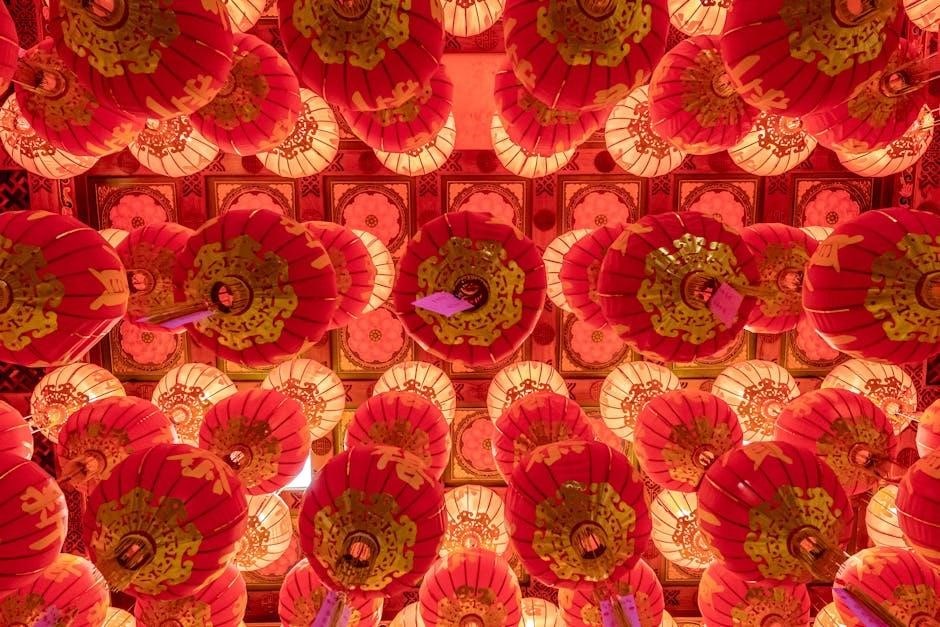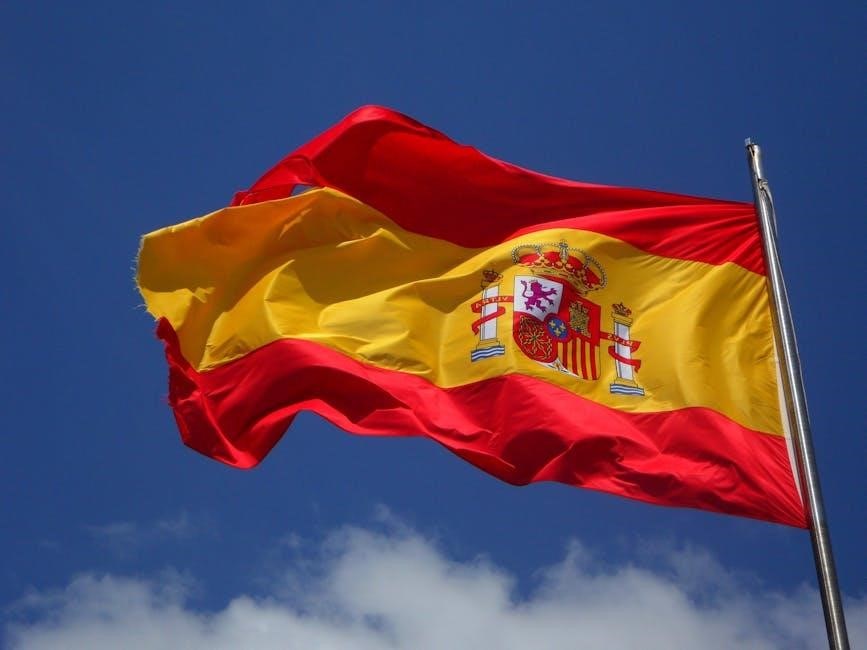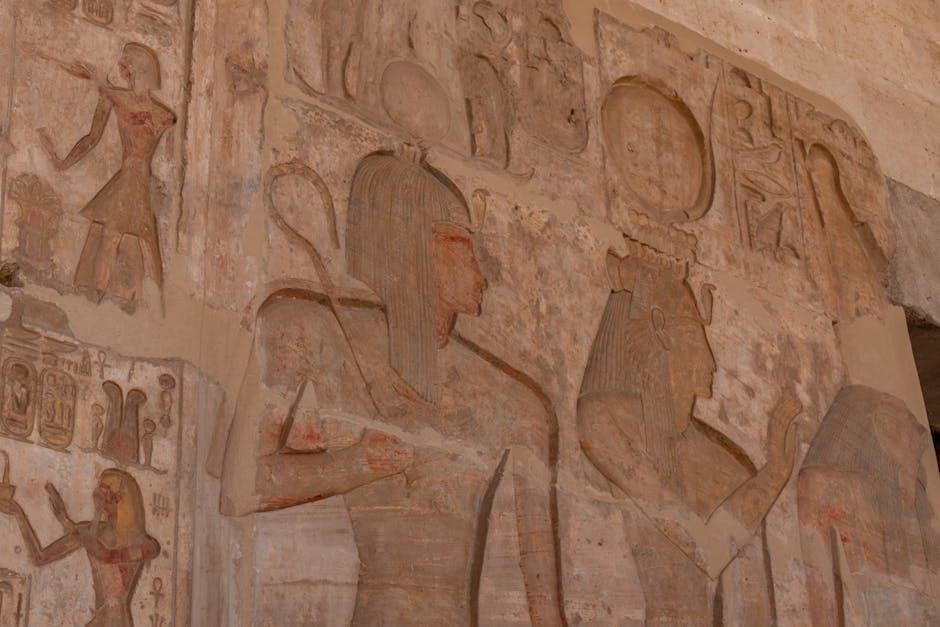Adinkra symbols, originating from Ghana and the Ivory Coast, are visual representations rich in cultural and philosophical meaning․ Used in fabric, art, and design, they convey proverbs, wisdom, and heritage, serving as a bridge between tradition and modernity․

Origin and History of Adinkra Symbols
Adinkra symbols trace their roots to the Akan people of Ghana and Ivory Coast, with historical ties to the ancient kingdom of Gyaman․ Their migration and evolution reflect rich cultural exchange․

2․1․ The Akan People and Their Cultural Significance
The Akan people, primarily located in Ghana and the Ivory Coast, are a culturally rich and diverse ethnic group․ Their history dates back to the ancient kingdom of Gyaman, where their traditions and philosophies flourished․ The Akan are known for their sophisticated goldwork, vibrant kente cloth, and deep oral traditions․ Their cultural practices are deeply rooted in community, spirituality, and the celebration of life․ The Akan people’s worldview is reflected in their art, language, and daily activities, making them a cornerstone of West African cultural heritage․ Their emphasis on proverbs, storytelling, and symbolic representations underscores their intellectual and creative depth, which is beautifully encapsulated in the Adinkra symbols․
2․2․ The Role of Adinkra in Traditional Akan Culture
Adinkra symbols play a central role in the traditional Akan culture, serving as visual representations of their philosophy, history, and social values․ These symbols are intricately incorporated into various aspects of Akan life, including cloth, rituals, and oral storytelling․ They are used to convey wisdom, moral lessons, and communal ideals․ In ceremonies such as births, deaths, and initiations, Adinkra symbols are displayed to guide and inspire․ They also function as tools for teaching and reinforcing cultural norms and values․ The Akan people rely on these symbols to express complex ideas and emotions, making them a vital part of their identity and cultural preservation․ Through Adinkra, the Akan people communicate their deep understanding of the world and their place within it․

Design and Meaning of Adinkra Symbols
Adinkra symbols are meticulously crafted, often from hand-carved gourds, and stamped onto fabric․ Each symbol carries a unique meaning, blending aesthetic beauty with profound philosophical and cultural significance․

3․1․ The Process of Creating Adinkra Symbols
The creation of Adinkra symbols begins with skilled artisans carving intricate designs into calabash gourds; These gourds are then used as stamps to apply the motifs onto fabric, typically during traditional ceremonies or celebrations․ The process involves several steps, including preparing the gourds, designing the symbols, and stamping them onto the cloth․ Natural dye, often derived from plants, is used to ensure the symbols’ durability and vibrant appearance․ This meticulous craftsmanship reflects the deep cultural significance of Adinkra, preserving its heritage while maintaining its artistic value․ Each symbol is a testament to the artisan’s skill and the enduring legacy of Akan traditions․
3․2․ Common Themes and Philosophical Underpinnings
Adinkra symbols embody a rich philosophical framework rooted in Akan culture, reflecting themes of wisdom, resilience, and harmony with nature․ Many symbols emphasize the importance of community, cooperation, and ethical behavior․ For instance, they often depict the interconnectedness of human and natural worlds, highlighting balance and respect for the environment․ Philosophical underpinnings include the pursuit of knowledge, the value of experience, and the enduring power of proverbs to guide behavior․ These symbols also explore complex human emotions and societal norms, offering insights into cultural values and moral principles․ By encapsulating such profound ideas, Adinkra symbols serve as a visual philosophy, bridging the past and present while inspiring reflection and understanding․

Popular Adinkra Symbols and Their Meanings
Adinkra symbols are rich in meaning, representing proverbs, wisdom, and cultural values․ They serve as a concise way to convey deep philosophical ideas and Akan heritage․
4․1․ The “Gye Nyame” Symbol: Its Meaning and Significance
The “Gye Nyame” symbol, meaning “except God” or “only God,” is one of the most revered Adinkra symbols․ It reflects deep spirituality and the belief in a higher power․ Often depicted as a stylized stool with crossed legs, it symbolizes strength, stability, and divine providence․ This motif is frequently used in art, fabric, and design to convey humility and the recognition of God’s omnipotence․ Historically, it is linked to the Asante people and their rich cultural identity․ The “Gye Nyame” symbol underscores themes of submission to a greater power and trust in divine wisdom, making it a powerful representation of faith and resilience in African philosophy․
4․2․ Other Prominent Symbols and Their Proverbial Meanings
Beyond “Gye Nyame,” several other Adinkra symbols hold significant cultural and philosophical importance․ The “Sankofa” symbol, depicted as a bird turning its head backward, signifies the importance of learning from the past; Another prominent symbol is “Anansi the Spider,” representing wisdom, cunning, and the power of storytelling․ The “Dwennimmen” symbol, meaning “ram’s horns,” embodies strength and humility, while “Mmatuo” symbolizes personal growth and development․ Each of these symbols is deeply rooted in African proverbs and teachings, offering insights into moral values, human behavior, and the natural world․ They serve as visual reminders of the wisdom and heritage of the Akan people, transcending time and culture to inspire contemporary audiences․

The Role of Adinkra in Modern African Culture
Adinkra symbols have become a vibrant part of modern African culture, inspiring art, fashion, and design globally․ They symbolize cultural identity and heritage, fostering pride and unity while influencing contemporary aesthetics and creativity․
5․1․ Adinkra Symbols in Contemporary Art and Design
Adinkra symbols have seamlessly integrated into contemporary art and design, offering a unique aesthetic that bridges tradition and modernity․ Artists worldwide incorporate these symbols into diverse mediums, from digital art to sculptures, leveraging their profound meanings to create thought-provoking pieces․ In design, they are featured in textiles, jewelry, and architecture, adding cultural depth and visual appeal․ This resurgence not only highlights African cultural richness but also inspires global creators to explore new ways of expressing universal themes․ The versatility of Adinkra symbols allows them to transcend their traditional use, making them a staple in modern artistic expressions while preserving their historical significance․

5․2․ Their Influence on Fashion and Global Culture
Adinkra symbols have become a significant influence in global fashion, with designers incorporating them into fabrics, patterns, and accessories․ Their deep meanings resonate universally, making them a popular choice for cultural expression․ In fashion, Adinkra prints are celebrated for their unique designs and historical significance, appealing to a diverse audience․ Beyond fashion, these symbols have permeated global culture, appearing in logos, music, and art․ They serve as a symbol of African identity and pride, while also fostering cross-cultural understanding․ The integration of Adinkra into global trends highlights their timeless relevance and the world’s growing appreciation for African heritage․ This cultural exchange continues to inspire new generations, ensuring the symbols’ enduring legacy․

Adinkra Symbols in Education and Philosophy
Adinkra symbols serve as powerful tools in education and philosophy, offering insights into moral lessons, cultural values, and human behavior․ They inspire critical thinking and reflection․
6․1․ Using Adinkra Symbols as Teaching Tools
Adinkra symbols are increasingly used in educational settings to teach cultural values, moral lessons, and philosophical concepts․ Their visual and symbolic nature makes them engaging tools for students, fostering critical thinking and creativity․ By exploring the meanings behind these symbols, educators can encourage discussions on ethics, community, and human behavior․ They also serve as a bridge to understanding African heritage, making them invaluable in multicultural education․ The proverbs associated with each symbol provide practical wisdom, helping students apply these teachings to real-life situations․ This method not only preserves cultural knowledge but also inspires a deeper appreciation for the richness of African philosophy and traditions․
6․2․ Their Role in Preserving African Heritage

Adinkra symbols play a pivotal role in preserving African heritage by encapsulating the history, philosophy, and cultural values of the Akan people․ They serve as a visual archive, documenting the community’s beliefs and traditions․ Through their use in art, fabric, and rituals, these symbols ensure that the wisdom of ancestors is passed down to future generations․ They also promote cultural identity and pride, especially among younger generations, by connecting them to their roots․ Beyond their cultural significance, Adinkra symbols act as a unifying element, fostering a sense of continuity and shared heritage across diverse African communities․ Their enduring presence ensures that the richness of African culture remains vibrant and accessible in a globalized world․
Adinkra symbols are a testament to the rich cultural and philosophical heritage of the Akan people, offering timeless wisdom and inspiration․ Their intricate designs and profound meanings continue to resonate globally, bridging tradition and modernity․ As powerful tools for education and cultural preservation, they ensure the legacy of African heritage endures․ Their adaptability in contemporary art, fashion, and design highlights their universal appeal and relevance in today’s world․ Adinkra symbols not only celebrate African identity but also promote cross-cultural understanding, embodying values of wisdom, resilience, and community․ Their enduring presence is a reminder of the importance of preserving and honoring cultural roots while embracing innovation and global connectivity․




